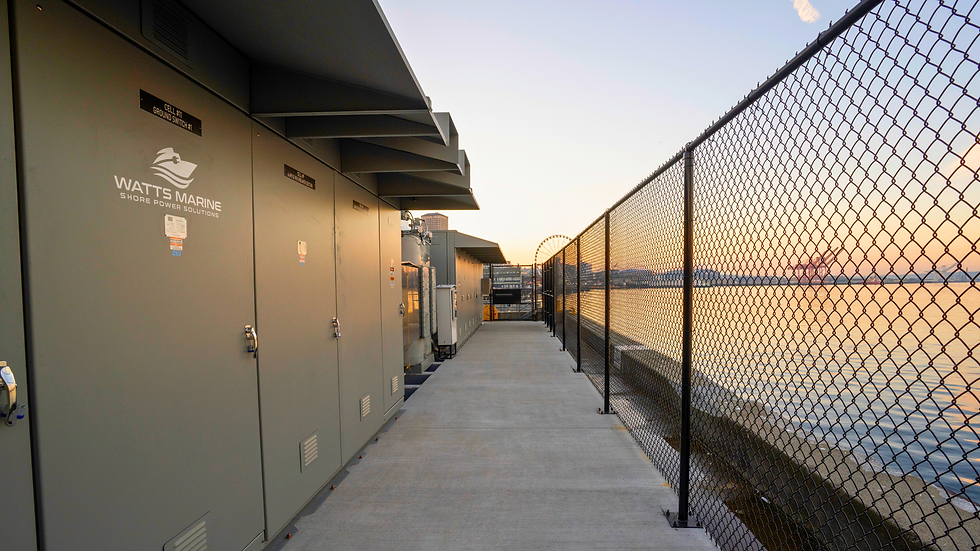How ship-to-shore power decarbonization technology is changing the maritime industry
- Watts Marine

- Jan 11, 2023
- 2 min read
Updated: Apr 23, 2025
From: MarineLog, October 2022
Marine technical managers and engineers are tasked with reducing the industry’s greenhouse gas emissions by half or more by 2050 to meet a UN International Maritime Organization goal. To examine the latest progress in ship-to-shore power systems that is helping to expedite decarbonization, we discuss the topic with Conrad Oakley, CEO, NovaTech Automation, a provider of automation and engineering solutions serving the electric utilities, process manufacturing, and marine industries for 40 years.

Marine Log (ML): What is cold ironing, and how can it accelerate maritime decarbonization?
Conrad Oakley (CO): With cold ironing, a vessel shuts down all on-board power generation from diesel engines and connects to shore power supplied by the local utility. In this way, the industry can lower CO₂ and other pollutant emissions up to 98% almost overnight. As a result, custom shore power systems are increasingly popping up at ports throughout North America.
ML: What is required to implement cold ironing?
CO: For an ocean-going vessel, converting to shore power requires proprietary equipment and the ability to accommodate a variety of ship conditions. Ships operate on either 6.6 or 11 KV and have power requirements anywhere from 4 to 16 megawatts with unique load profiles specific to each ship. As a result, the substation in this environment must be able to protect both the vessel and the utility providing the power.
ML: Where was cold ironing first used in the marine industry?
CO: The technology originated with the cruise line industry adapting substations to facilitate connecting an ocean-going ship to shore power while in port. In 2005, Princess Cruises was looking for a partner to build a shore power system at the Port of Seattle. The company reached out to a large electrical contractor with deep experience in commercial high-voltage projects. Design, engineering, manufacturing, installation, and commissioning of the first project was completed in under six months.
ML: How has cold ironing developed in the industry? What equipment is utilized today?
CO: The development of the custom solution eventually led to the formation of a shore power division for the contractor which has now become a stand-alone shore power contractor for ports. Today, Watts Marine supports 10 installations in seven ports across Canada and the U.S.
The patented custom shore power system consists of proprietary equipment designed specifically for the cruise ship industry. It includes dual-voltage electrical service equipment, custom-developed electrical cable handling equipment, and customized electronic monitoring and control equipment.
Please note: The news content featured on the Watts Marine website is sourced from external news outlets and media organizations. Watts Marine does not claim authorship of this material. Full credit is given to the original publishers, with direct links or references provided to the original articles and sources.




Comments